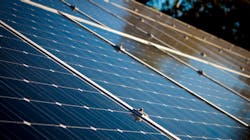Energy industry experts recognize the need for a more decarbonized grid. Currently, falling renewable costs are enabling deployment of smaller energy resources, driving decarbonization and decentralization. Finding reliable, flexible, and intelligent ways to manage an increasingly diverse field of distributed energy resources (DERs) is essential. With climate change, extreme weather events will only become more frequent and intense, underscoring the need for grid modernization solutions to withstand these crises. Utilities and grid operators must take advantage of this transformational time to adopt automated, grid-edge orchestration platforms, including distributed energy resource management systems (DERMS), alongside new DER technologies and management processes.
External Factors and Legislation
The Federal Energy Regulatory Commission (FERC) approved Order 2222 in September 2020, allowing DER aggregators to compete in all regional wholesale electric markets. Order 2222 has tremendous implications for increased U.S. DER adoption, accelerating the value of these assets in organized markets. Throughout the Biden administration, we can also anticipate favorable legislation and programs prioritizing the use of clean energy resources in the U.S. grid.
With the national digitization and decarbonization movement gaining momentum, DER assets are infinitely more valuable when integrated into consumer sites, markets, and the grid in a way that takes evolving demand into account. This calls for a rethinking of systems operations and a broader introduction of scalable, automated management solutions that keep pace with the growth of DER networks.
Why DERMS?
Existing platforms that operators use to manage distribution systems, monitor, and react to grid events, such as advanced distribution management systems (ADMS), cannot scale at the speed required to integrate and manage DERs in today’s ecosystem. DERMS address this challenge, relying on automation and artificial intelligence (AI)-powered algorithms to learn and respond to customer demand and usage patterns. DERMS work with legacy assets seamlessly — operators can integrate a new system without replacing an existing one.
With financial, technical, and regulatory factors accelerating global DER demand, DERMS address the challenges constraining broader adoption of these technologies:
- Deferred capital costs: As DER assets increase and diversify, integrating them can strain grid infrastructure. DERMS supply the utility industry with DER awareness, analytics including available flexibility and susceptibility for dispatch planning, and DER telemetry and control. Utilities should look to DERMS to support infrastructure, generation, and other capital cost deferrals.
- Grid stability: Influxes of distributed generation technologies can lead to unstable grids and reliability issues. Utilities must invest in DERMS, which allow for better management of grid flexibility. A utility operator can meet demand through prioritization and aggregation of resources. This includes using DERMS surgically to minimize disruptions and support operational needs.
- DER aggregation: Today's energy market relies on DERs that generate, consume, or store electricity. With DERMS, passive energy consumers become active prosumers. This sophisticated orchestration is required to manage increased DER adoption across locations and technology categories. DERMS make this possible and offer utilities insights to improve customer interaction and synchronization of these assets.
Why Now?
With shifting incentive programs, legislative action, and rapid growth of DER installations, utility leaders often wait to integrate DERMS into their existing infrastructure. This paradoxical approach is like waiting to repair a bridge until it's beyond repair. Waiting to install DERMS after more DERs are introduced to a grid means operators must implement a new management system for assets that may already be unmanageable. There is no reason to wait. Solutions available today make it easier for operators to bring new DERs online and manage them with minimal disruption to the grid. Utilities with lower DER penetration should also look to integrate DERMS sooner rather than later, as DER uptake will only continue to grow in the current market.
The most intelligent, automated DERMS act as a "system of systems," integrating with vendors of DERs, VPPs, and microgrid management systems in addition to legacy systems operators already use such as SCADA, DMS, and ADMS. A DERMS will not only analyze and adjust based on grid behaviors, but its algorithms will also efficiently scale and manage new DER classes as they emerge.
DERMS are a worthwhile investment for utilities looking to play an active role in the clean energy transition. Utilities using DERMS can initiate data-driven discussions with customers, providers, legislators, and regulators. With the transparency and situational awareness a DERMS delivers, utilities are better equipped to find valuable solutions for all stakeholders that take real-world scenarios and learned insights into account.
New global DER capacity additions are expected to pass new centralized generation capacity additions annually in 2021 — to help usher in the energy transition, utilities need to implement dispatchable and flexible technology solutions. DERMS not only act as a single, orchestrated, and holistic system, but they also have the potential to disrupt the global market with end-to-end innovations required to support a more resilient, sustainable, and low-carbon energy system.
About the Author
Andy Bennett
Andy Bennett is CEO of mPrest, Inc., a developer of distributed asset orchestration and optimization software.
